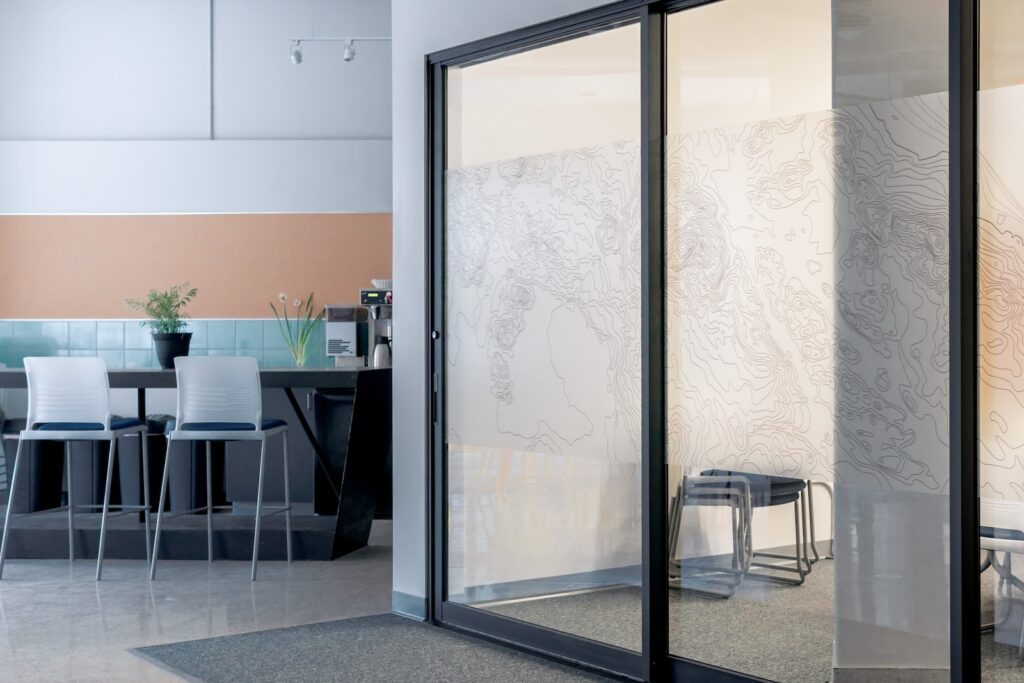Summer is the perfect time to enjoy the warmth and sunshine, but it can also bring unwanted heat into your home. Sliding glass doors are a great way to let in natural light and enjoy the beauty of the outdoors, but they can also let in a lot of heat. In this guide, we will show you how to insulate your sliding glass doors for summer, so you can stay cool and comfortable all season long.
Insulating your sliding glass doors not only helps keep your home comfortable but also reduces your energy bills. With just a few simple steps, you can make a big difference in your home’s energy efficiency and enjoy a more comfortable summer. Read on to learn how to insulate your sliding glass doors and enjoy the summer season without feeling the heat.

Sliding Glass Doors for Summer: A Comprehensive Guide
1. Why Insulate Sliding Glass Doors?
Sliding glass doors are a popular feature in many homes and offer many benefits such as natural light and easy access to outdoor spaces. However, they can also be a source of energy loss during hot summer months. Insulating your sliding glass doors can help reduce energy costs and keep your home cool and comfortable.
One of the biggest reasons to insulate sliding glass doors is to prevent cool air from escaping your home. If you have an air conditioning system, it can be costly to keep your home cool if the cold air is escaping through your sliding glass doors. Insulating your doors can help prevent this and keep your home cool without overworking your air conditioning system.
2. Types of Insulating Materials
There are several materials you can use to insulate your sliding glass doors. One of the most common is weatherstripping. This is a thin strip of material that goes around the edges of your door frame to create a seal that prevents air from escaping.
Another option is to use window film. This is a clear film that can be applied to the glass of your sliding doors. It helps to reflect heat and UV rays, which can help keep your home cool and reduce energy costs.
You can also use insulated curtains or blinds. These are specially designed to prevent heat transfer and can be closed during the hottest parts of the day to keep your home cool.
3. How to Install Weatherstripping
Installing weatherstripping is a simple and cost-effective way to insulate your sliding glass doors. First, measure the length of your door frame and purchase weatherstripping that matches the length.
Clean the surface of the door frame with a damp cloth, and let it dry completely. Then, peel the backing off the weatherstripping and apply it to the door frame. Make sure to press firmly to create a tight seal.
4. Installing Window Film
Window film is another popular option for insulating sliding glass doors. To install, first clean the glass surface thoroughly. Then, spray the glass with a mixture of water and soap.
Remove the backing from the film and apply it to the glass, making sure to smooth out any bubbles or wrinkles. Use a squeegee to remove any excess water and let the film dry completely.
5. Benefits of Insulating Sliding Glass Doors
Insulating your sliding glass doors can offer many benefits, including:
– Lower energy costs
– Increased comfort in your home
– Reduced strain on your air conditioning system
– Protection against UV rays
– Improved privacy and security
6. Insulated Curtains and Blinds
Insulated curtains and blinds are another option for insulating your sliding glass doors. These are specially designed to prevent heat transfer and can be closed during the hottest parts of the day to keep your home cool.
They also offer increased privacy and security, as they can prevent people from seeing inside your home. Plus, they come in a variety of styles and colors, so you can choose a design that complements your home’s décor.
7. Window Coverings vs. Weatherstripping
When it comes to insulating your sliding glass doors, you have the choice between window coverings and weatherstripping. While weatherstripping is a simple and cost-effective solution, it may not offer as much protection against heat and UV rays as window film or insulated curtains and blinds.
Window coverings, on the other hand, offer more comprehensive protection but can be more expensive. Ultimately, the best option for you will depend on your budget, energy needs, and personal preferences.
8. Maintenance and Cleaning
Once you’ve installed your insulation materials, it’s important to maintain and clean them regularly. For weatherstripping, check for any signs of wear and tear, and replace it as needed.
For window film, use a soft cloth or sponge to clean it with mild soap and water. Avoid using abrasive cleaners or tools that could scratch the surface.
For insulated curtains and blinds, follow the manufacturer’s instructions for cleaning and maintenance.
9. Conclusion: Stay Cool and Save Energy
Insulating your sliding glass doors is a simple and effective way to keep your home cool during the hot summer months. Whether you choose weatherstripping, window film, or insulated curtains and blinds, you can enjoy lower energy costs and increased comfort in your home.
By taking the time to insulate your sliding glass doors, you can stay cool and save energy all summer long.
10. Frequently Asked Questions
- Q: Can I install weatherstripping myself?
- A: Yes, weatherstripping is easy to install and can be done by most homeowners.
- Q: How do I know which insulation material is right for me?
- A: Consider your energy needs, budget, and personal preferences when choosing between weatherstripping, window film, and insulated curtains and blinds.
- Q: Will insulating my sliding glass doors really save me money?
- A: Yes, insulating your doors can help reduce energy costs by preventing cool air from escaping your home.
Frequently Asked Questions
Here are some commonly asked questions about insulating sliding glass doors for summer:
What materials are best for insulating sliding glass doors?
The most effective materials for insulating sliding glass doors are cellular shades, window films, and weatherstripping. Cellular shades are made of honeycomb-shaped cells that trap air and provide insulation. Window films are applied directly to the glass and reflect heat. Weatherstripping is used to seal gaps and prevent air leaks.
It’s also important to choose materials that are easy to install and won’t damage the doors. Some options, like adhesive weatherstripping, can leave residue or damage the finish of the doors.
How do I install cellular shades on sliding glass doors?
Installing cellular shades on sliding glass doors is a simple process that can be done in a few steps. First, measure the width and height of the door to determine the size of the shade. Then, mount the brackets at the top of the door frame and slide the shade into place. Finally, adjust the tension and position of the shade to ensure a snug fit.
Some shades may come with additional hardware, like hold-down brackets, to keep the shade in place when the door is opened or closed. Be sure to follow the manufacturer’s instructions for installation and use.
Can I use window film on sliding glass doors?
Yes, window film can be used on sliding glass doors to provide insulation and reduce heat. It’s important to choose a film that is specifically designed for glass doors and can withstand the constant movement and use. Some films may require professional installation, while others can be applied by the homeowner with a few tools and some patience.
Be sure to follow the manufacturer’s instructions for installation and care, and avoid using abrasive cleaners or tools that could damage the film or the glass.
What is the best way to seal gaps around sliding glass doors?
The best way to seal gaps around sliding glass doors is to use weatherstripping. There are several types of weatherstripping available, including adhesive foam, vinyl, and silicone. Choose a type that is appropriate for the size and shape of the gap, and that is compatible with the material of the door frame and the glass.
Clean the area around the gap thoroughly before applying the weatherstripping, and be sure to press it firmly into place. Test the door to ensure a tight seal and make adjustments as necessary.
Should I insulate both sides of the sliding glass doors?
It is recommended to insulate both sides of the sliding glass doors for maximum effectiveness. Insulating only one side will still provide some benefits, but heat and cold can still transfer through the uninsulated side, reducing the overall efficiency of the insulation.
Cellular shades and window films can be installed on both sides of the glass, while weatherstripping should be applied to the side that faces the exterior to prevent air leaks. Be sure to choose materials that are suitable for use on both sides of the doors.
Weather-Stripping Explained | Beacon Windows | Sliding Door Specialist
As we approach summer, the temperatures are sure to rise, and the sun will be shining brighter than ever. While this may be a welcome change in some parts of the world, it can be a nightmare for those with sliding glass doors. Fortunately, there are several ways to insulate your sliding glass doors and keep the heat outside where it belongs.
One method for insulating your sliding glass doors is to use window film. This is an excellent option for those who want to keep their doors looking sleek and modern without sacrificing functionality. Window film is easy to apply and can reduce heat transmission by up to 80%. It also blocks harmful UV rays, which can fade your furniture and flooring over time.
Another option is to use insulated curtains or shades. This is a great choice for those who want a more traditional look and feel. Insulated curtains and shades are designed to block out the sun’s rays and keep your home cool and comfortable. They are available in a range of styles and colors, so you can choose the perfect look for your home.
Finally, you can also use weatherstripping to insulate your sliding glass doors. This is an inexpensive and effective method for sealing gaps and preventing drafts. Weatherstripping can be applied to the edges of your doors and windows, creating an airtight seal that will keep the heat out and the cool air in.
In conclusion, insulating your sliding glass doors for summer is essential if you want to keep your home cool and comfortable. Whether you choose window film, insulated curtains, or weatherstripping, there are plenty of options available to suit your needs and budget. With a little bit of effort, you can enjoy a comfortable and pleasant summer in your home.


